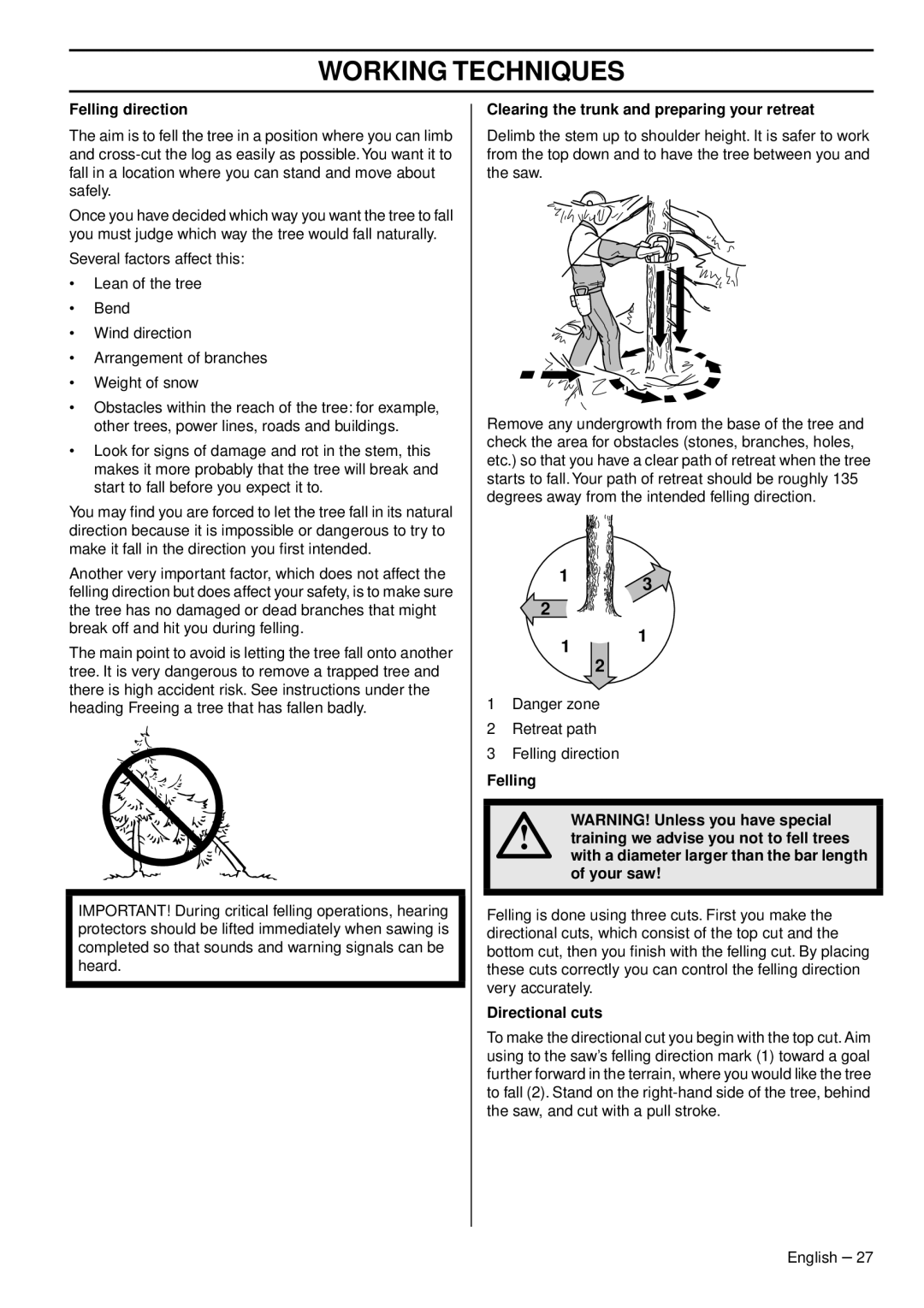455, 455e, 460, 465 specifications
The Husqvarna 460 and 455 series chainsaws are some of the most popular models in their class, recognized for their reliability, performance, and advanced technology. These machines are designed to meet the demands of both professionals and enthusiasts who require powerful tools for cutting firewood, felling trees, or performing tree maintenance.The Husqvarna 460 is equipped with a robust 60.3 cc engine that delivers impressive power and efficiency. With a power output of approximately 3.6 kW, this chainsaw is capable of handling ambitious cutting tasks with ease. The design of the 460 includes a low-vibration system that significantly reduces operator fatigue during extended use. This is achieved through effective isolating features that dampen vibrations transferred to the user's hands, allowing for more comfortable operation over longer periods.
One of the standout features of the Husqvarna 460 is its X-Torq engine technology. This innovative design reduces fuel consumption by up to 20% while also decreasing harmful exhaust emissions. This is increasingly important for environmentally conscious users, as it allows for a greener operation without compromising performance. The chainsaw is also equipped with an air injection system that effectively removes larger particles from the air before they reach the filtration system, ensuring cleaner air intake and extending the lifespan of the air filter.
On the other hand, the Husqvarna 455 Rancher is another exceptional model known for its versatility and robust design. Featuring a slightly smaller 55.5 cc engine, it offers a solid power output of around 2.6 kW, making it suitable for a wide range of tasks from cutting firewood to clearing brush. The 455 Rancher shares many of the same technological advancements as the 460, including the X-Torq engine and low-vibration technology, providing users with similar benefits in terms of efficiency and comfort.
Both models feature an adjustable oil pump for better chain lubrication, ensuring smooth operation and prolonging the chain's life. Additionally, the easy access air filter and tool-less chain tensioning allow for quick maintenance and adjustments in the field, making them user-friendly choices.
Overall, the Husqvarna 460 and 455 series chainsaws combine power, efficiency, and advanced technology, catering to the needs of both casual users and professionals alike. Their thoughtful design and robust performance establish them as reliable tools in any cutting task, making them a top choice for those in need of high-quality chainsaws.

